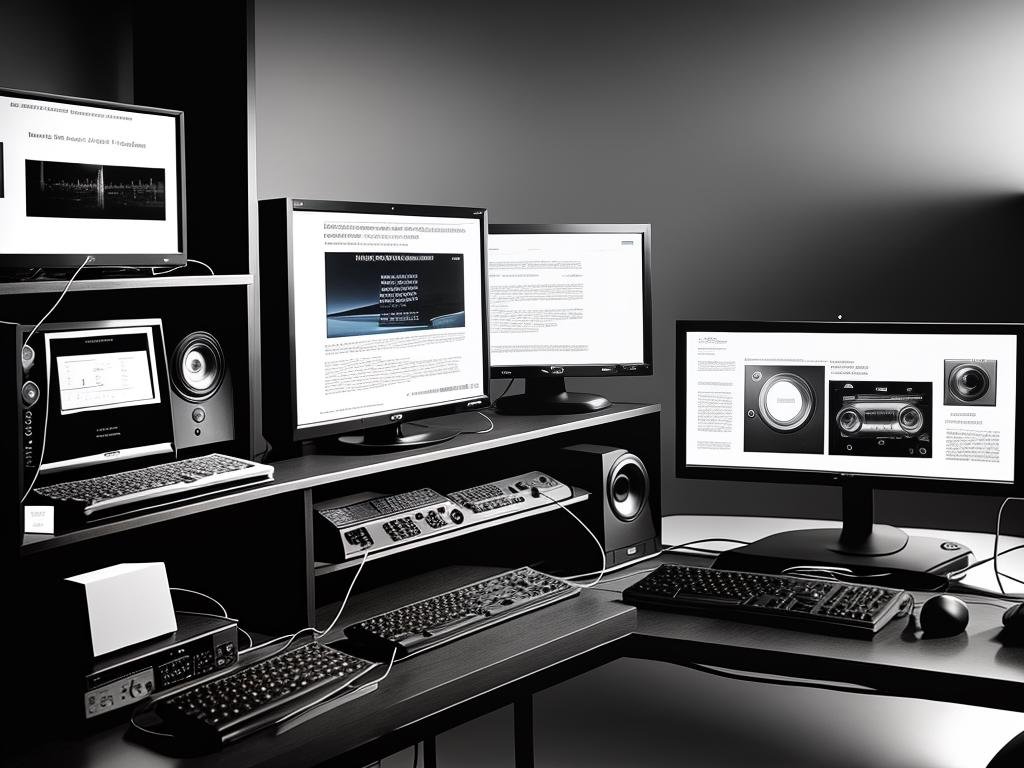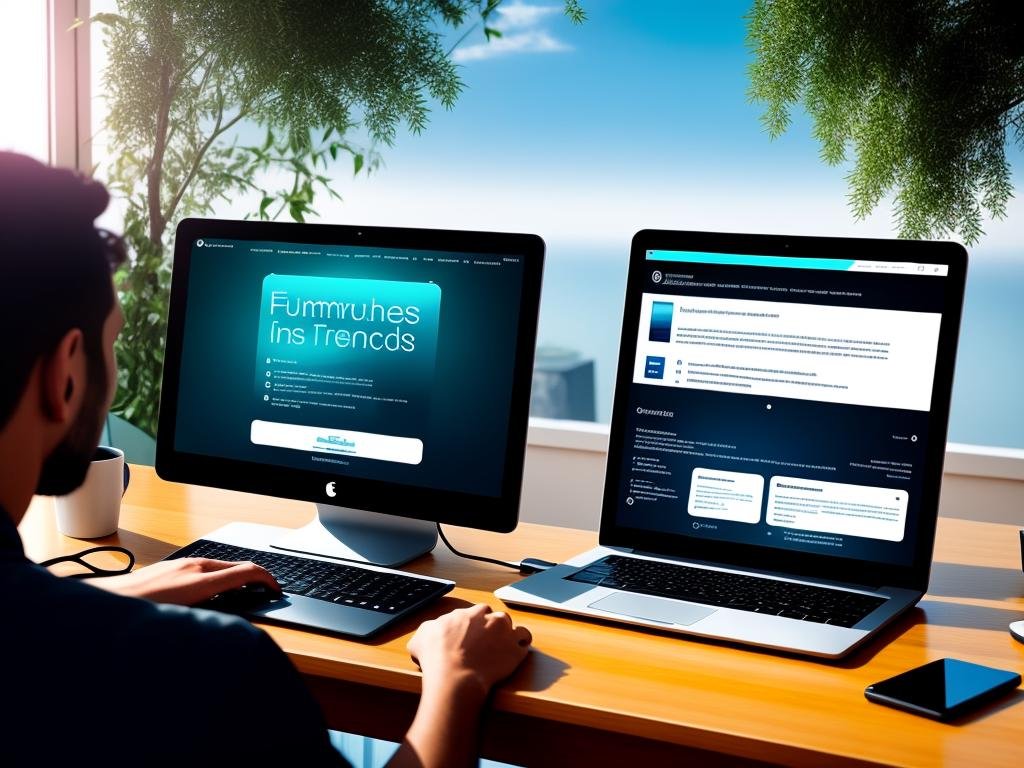As we collectively embrace the digital age, we are continuously introduced to innovative technologies designed to make life easier and more productive. One such exciting development is computer vision, an interdisciplinary field that utilizes algorithms to process and interpret visual data and so, replicating the function of human vision with a high degree of accuracy. This document provides an all-encompassing look at the computer vision, tracing its history from rudimentary beginnings to the cutting-edge advancements of the present day. It aims to break down and clarify the complex mechanisms that enable this technology, explore the diverse techniques and algorithms that drive it, and delve into its various applications across industries. Furthermore, it aims to project into the future of computer vision, discussing potential trends and the challenges that lie ahead.
Basics and History of Computer Vision
What is Computer Vision?
Computer Vision is a branch of artificial intelligence (AI) focused on replicating parts of the complexity of the human vision system and enabling computers to identify and process objects in images and video similarly to humans. In other words, it seeks to automate and enhance the visual capabilities of machines.
The goal of computer vision is to simulate human vision using computer software and hardware at high speed and in real time. This powerful technology holds the potential to revolutionize many sectors of society such as healthcare, transportation, entertainment, and security.
Real-life Applications
There are many practical applications of computer vision that have already become a part of everyday life. One of the most common applications is in facial recognition. Facebook, for instance, uses computer vision to identify faces in photographs. Another relevant use is in self-driving vehicles, where computer vision identifies pedestrians, other cars, and various obstacles to navigate the road safely. In manufacturing, computer vision is used for quality control, guiding robotic equipment, and maintaining production process consistency. Another prevalent application is in security systems, for instance, monitoring public spaces for threats or events out of the ordinary.
The History of Computer Vision
The concept of computer vision, or machines being able to see and interpret visual information, was first introduced in the early 1960s as researchers explored the potential of computers to mimic human perception. Basic forms of image recognition started to develop, typically identifying shapes or simple objects.
In the 1970s and 80s, the focus of computer vision shifted somewhat towards 3D scene understanding. This was a significant step forward, although 3D vision techniques were often limited and computational resources were scarce.
The 1990s and early 2000s saw major advancements in machining learning and pattern recognition. Techniques from statistical learning theory became widely used in the computer vision community, improving performance of many systems. By the late 2000s, a new wave of Deep Learning methods started to replace traditional techniques, playing a key role in computer vision development.
An Overview of Modern Advances in Computer Vision
The field of computer vision has been revolutionized by the advent of deep neural networks. These powerful tools enable computers to learn and recognize complex patterns by training with a vast collection of labeled data. Most of the work pertaining to these networks is focused on enhancing their speed and efficiency, thereby increasing the scope of problems they can solve.
Facial recognition and object detection are two realms that have significantly benefited from these advances. For example, Google Photos uses image recognition for tagging and categorizing users’ photos, while Tesla’s Autopilot system depends on computer vision to navigate the road.
Looking ahead, computer vision could reshape several industries. It could bolster medical diagnosis procedures, pave the way for autonomous vehicles to become commonplace, and empower AI assistants with the ability to fully comprehend visuals.
However, these applications merely scratch the surface of what computer vision is capable of. As the field continues to evolve at a breakneck speed, one can only speculate about the other potential uses of this technology. In order to grasp the magnitude of these possibilities and keep track of this rapidly advancing field, it’s crucial to understand the foundations and evolution of computer vision.

How Computer Vision Works
Decoding Computer Vision: From Pixels to Perception
Creating a bridge between human perception and machine understanding, computer vision is an interdisciplinary science. The goal of this technology is to design and train machines to interpret and analyse visuals – be they static images or streaming videos – drawing parallels with the extraordinary capabilities of human sight. Through this process, machines move beyond simply capturing an image to understanding and interacting with their surroundings, essentially learning to ‘see’.
Image and Video Data in Computer Vision
The primary type of data used in computer vision is digital images and videos. Images are composed of pixels, the smallest controllable element of a picture represented on a digital screen. These pixels are used to convey color, depth, and intensity of a scene to a machine.
Videos are simply sequences of images, known as frames, displayed at a rapid pace. This rapid sequence of images creates an illusion of movement. In computer vision, both images and video frames are analyzed and processed to extract information.
The Role of Algorithms in Computer Vision
An important part of computer vision is the creation of algorithms that can process, analyze, and interpret the visual data. Algorithms are sets of mathematical instructions that guide the computer in completing a specific task.
For instance, edge detection algorithms identify the boundaries of objects within an image by looking at the points in the image where the brightness changes significantly. These algorithms form the backbone of how computers interpret and categorize visual data.
Contributions of Artificial Intelligence and Machine Learning
Artificial Intelligence (AI) and Machine Learning (ML) play a significant role in modern computer vision. AI is a broad term that refers to machines being able to mimic human intelligence. In terms of computer vision, this would imply that computers are capable of perceiving and understanding visual information similar to how humans can.
Machine Learning, a subset of AI, provides a system where machines can learn from data without being explicitly programmed. It is this technology that refines computer vision, making it increasingly accurate in identifying and interpreting visual information.
For example, Machine Learning algorithms can be used to train a computer to recognize specific images. The computer is presented with a large number of labeled images and learns to recognize the elements of those images through patterns and associations. Eventually, it is capable of recognizing these elements independently in a new, unlabeled image.
Interaction Between Components in Computer Vision
In the process of computer vision, all these elements interplay. An image or video is broken down into pixels, which are then processed and analyzed through complex algorithms. AI and machine learning come into play, providing improved performance and the ability to learn from the data.
The algorithms, along with AI and ML, enable the computer to identify and categorize different parts of an image or video, leading to an understanding of the scene similar to the human interpretation of the scene.
In essence, Computer Vision is a dynamic intersection of several disciplines, including but not limited to computer science, algorithms, artificial intelligence, and machine learning. These multifaceted elements converge to create an ingenious system. This system enables machines to interpret and comprehend the visual world in ways that mirror human understanding remarkably closely.

Key Techniques and Algorithms in Computer Vision
The Convergence of Disciplines: An In-Depth Look at Computer Vision
Computer vision is a distinctive subset of artificial intelligence (AI) that equips computers and systems to extract pertinent information from digital images, videos, and other visual mediums. By emulating human vision, computer vision aims to understand and interpret our environment in astonishing detail. It integrates profound fields such as optics, signal processing, machine learning, and pattern recognition into its functional facet.
Lines of code imbued with vision skills hold tremendous potential for revolutionizing a myriad of sectors, spanning from healthcare and autonomous vehicles to security and agriculture. The consistent development and refinement of various techniques and algorithms have stoked the transformative powers of computer vision, broadening its horizons every day.
Object Detection: Identifying and Locating Objects in Images
One of the essential techniques in computer vision is object detection. It involves identifying and locating objects within an image or video stream. It’s beyond just classifying an image to indicate which object does exist, it figures out the location and size of that object within the image.
One of the popular algorithms used for object detection is the Convolutional Neural Networks (CNNs). CNNs are a form of deep learning algorithm that can take in an input image, process it, and classify it under certain categories. R-CNN (Region based Convolutional Neural Networks), Fast R-CNN, and Faster R-CNN are some of the object detection algorithms that use the CNN.
Image Recognition: Classifying Object Types
Image recognition is closely related to object detection, but it goes a step further to classify the type of objects identified in an image or video sequence. It involves identifying objects, shapes, characters, or patterns in an image.
The basis of image recognition lies within machine learning technologies. An example of an algorithm used is the Deep Neural Networks (DNNs). These are algorithms inspired by the human brain, that learn to identify patterns in digital data. AlexNet, GoogleNet, and ResNet are some of the types of DNNs used for image recognition tasks.
3D Reconstruction: A Deeper Layer of Visual Understanding
3D reconstruction in computer vision refers to the process of capturing the shape, appearance and elemental properties of an object from one or more images of that object. It is used in areas like video games, film production, and more recently, in building autonomous vehicles.
One of the most significant algorithms in 3D reconstruction is the Simultaneous Localization and Mapping, or SLAM. SLAM constructs or updates a map of an unknown environment while simultaneously keeping track of an agent’s location.
An Overview of Computer Vision: Methods and Algorithms
Computer Vision, armed with key techniques and algorithms, provides systems the capability to interpret and understand visual data in ways similar to, and often surpassing, human perception abilities. These techniques make the detection, classification, and understanding of visual content possible. With continuous research and transformative discoveries, the relevance and application of computer vision in our daily lives are destined to become even more pronounced.

Applications and Use cases of Computer Vision
Application of Computer Vision in Automotive Industry: Autonomous Vehicles
In the automotive industry, computer vision has been instrumental in the development of self-driving technologies. It makes it possible for these vehicles to visualize their environment and self-navigate. This is achieved by processing real-time images, decoding the information they contain, and making decisions based on this data. These decisions could range from identifying road obstacles to lane detection, traffic sign recognition, and predicting potential routes of other vehicles.
Tesla’s Autopilot feature provides a prime demonstration of the application of computer vision in this industry. This driver-assistance system utilizes several cameras to create a visual interpretation of the environment around the vehicle. Using computer vision algorithms, the system can autonomously control the vehicle’s steering, acceleration, and braking.
Computer Vision in the Security Sector: Facial Recognition
Modern security systems heavily rely on computer vision technology, particularly facial recognition. Facial recognition technology maps a person’s facial features and stores the data as a faceprint, which is then used to identify or verify a person’s identity in an existing database. This use of computer vision has significant applications in law enforcement, enabling quicker and more accurate identification of criminals. For instance, law enforcement agencies employ facial recognition technology to cross-verify CCTV footage to identify suspects rapidly.
Furthermore, facial recognition is becoming an integral part of access control in sensitive areas or secure buildings, where accurate identification and verification are paramount.
Computer Vision in Social Media: Image and Video Analysis
Social media platforms extensively use computer vision to analyze images and videos. Through computer vision algorithms, such platforms can recognize images and videos’ content, from identifying individuals and categorizing images based on their elements to detecting inappropriate or copyrighted materials.
Facebook’s DeepFace, for instance, is capable of recognizing users in an uploaded photo with an accuracy level equivalent to human perception. In addition to its user experience benefits, this application also enables social media platforms to moderate content effectively. For instance, algorithms can detect and remove content violating user guidelines, such as explicit material or hate speech.
Computer Vision in Healthcare: Tumor Detection
In the healthcare sector, computer vision can increase the potential and accuracy of disease detection and diagnosis, particularly in imaging-based diagnostics such as radiology. One use is in early tumor detection. Computer vision algorithms can analyze medical images like MRIs, CT scans, and X-rays to detect abnormalities such as tumors.
The technology has significantly improved the detection rate of diseases that are hard to diagnose in early stages, including breast cancer and lung cancer. Tools like Google’s LYNA (Lymph Node Assistant) use deep learning — a form of AI — to detect breast cancer metastasis with a reported accuracy of 99%.
A Deeper Dive into Computer Vision Applications
From powering autonomous vehicles to enabling advanced facial recognition systems, computer vision has found profound use-cases across various sectors. Its applications aren’t only limited to this; social media content analysis and tumor detection in healthcare are other areas where this technology has created a huge impact. In all these industries, the impact of computer vision has led to smarter decision-making, a spike in efficiency, and ultimately, an elevated end-user experience.

Future Trends and Challenges of Computer Vision
Upcoming Developments in the Field of Computer Vision
When we zoom into the fast-paced world of technology, the critical role of Computer Vision (CV) at the crossroads of machine learning and artificial intelligence (AI) is evident. Its potential to redefine numerous sectors isn’t just theory; it’s quickly becoming reality, with new industries being primed for disruption.
A key advancement under the CV umbrella is object detection where constant improvements elevate the ability of machines to recognize and label objects in digital images or videos. In the future, we can anticipate these systems to be refined further, allowing them to distinguish the finest details, a task as challenging as finding a needle in a haystack.
Additionally, we can expect progress in ‘Semantic Segmentation’ systems that aim to not only identify objects but also comprehend the context and learn the relationships between them, similar to how humans understand their surroundings.
Another exciting future development within CV lies in the broadening use of 3D vision systems. Unlike their 2D counterparts, these systems add depth and volume perception, opening avenues for advancements in virtual (VR) and augmented reality (AR), robotics, and self-driving cars.
Industries That Could be Revolutionised
The healthcare industry stands to be one of the major beneficiaries of CV advancements. Early detection of diseases through CV-assisted image analysis can dramatically improve patient outcomes. Similarly, the retail sector can leverage CV for enhancing customer experience, improving inventory management, and minimizing theft.
Computer Vision can also revolutionize the agriculture industry by enabling precision agriculture, including detecting crop health, improving yield, and optimizing resources. Moreover, the utilities and construction sector can significantly benefit from CV for infrastructure inspection, predictive maintenance, and worker safety.
In autonomous and electric vehicles (EVs), continuous advancements in CV are helping scale the technology to fully autonomous level-five cars.
Challenges and Ethical Dilemmas
However, the path of CV advancements is not without its hurdles and ethical dilemmas. One of the main challenges is ‘bias’ in CV systems, which may perpetuate discriminatory practices. The accuracy of these systems can vary across different genders, ages, and ethnicities – a challenge that must be overcome to ensure fairness.
Another challenge is the ‘privacy paradox’. While CV systems offer potential benefits, their use in surveillance and tracking activities could raise serious privacy concerns. Balancing these benefits against privacy rights and ethical considerations will remain a key challenge for CV developments.
Additionally, while deep learning techniques have contributed significantly to CV success, they require massive amounts of data and computation power. The consequent environmental implications, coupled with data privacy regulations, add to the list of hurdles that this field needs to overcome.
Furthermore, the ‘interpretability’ issue in CV systems continues to be a problem, namely, understanding why these systems make the decisions they do. In critical sectors like healthcare, deciphering the reasoning behind AI-driven decisions is fundamental, and remains a significant challenge.
Despite these obstacles, the potential benefits of CV are immense. With ongoing research and a constant drive for betterment, the future of Computer Vision promises new breakthroughs, innovations, and possibilities, revolutionising the way we interact with the world.

Having delved deeply into the realm of computer vision, it’s evident that this technology is not just a fleeting trend, but an impactful innovation transforming how several industries operate, from automotive and entertainment to healthcare and security fields. As we move toward a more digitized and automated future, the importance of computer vision will only continue to grow. The ongoing research brings promise of further advancements, set to bring even more groundbreaking shifts in our daily lives and work. However, it’s also crucially important to anticipate and address potential challenges and ethical issues that such technological strides can pose, thus ensuring a balance between progress and responsibility.




